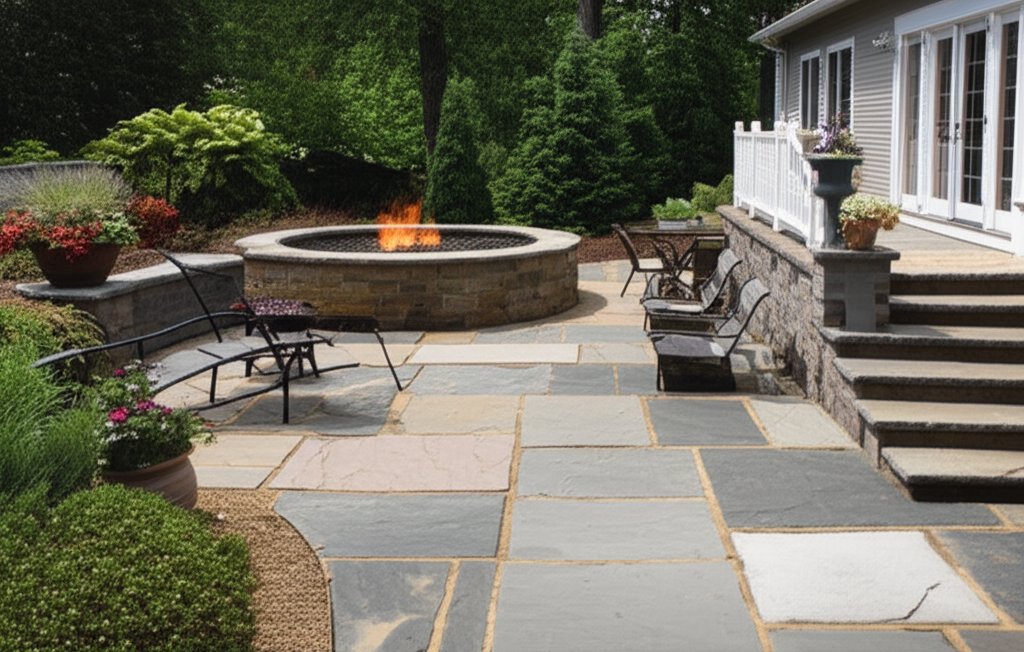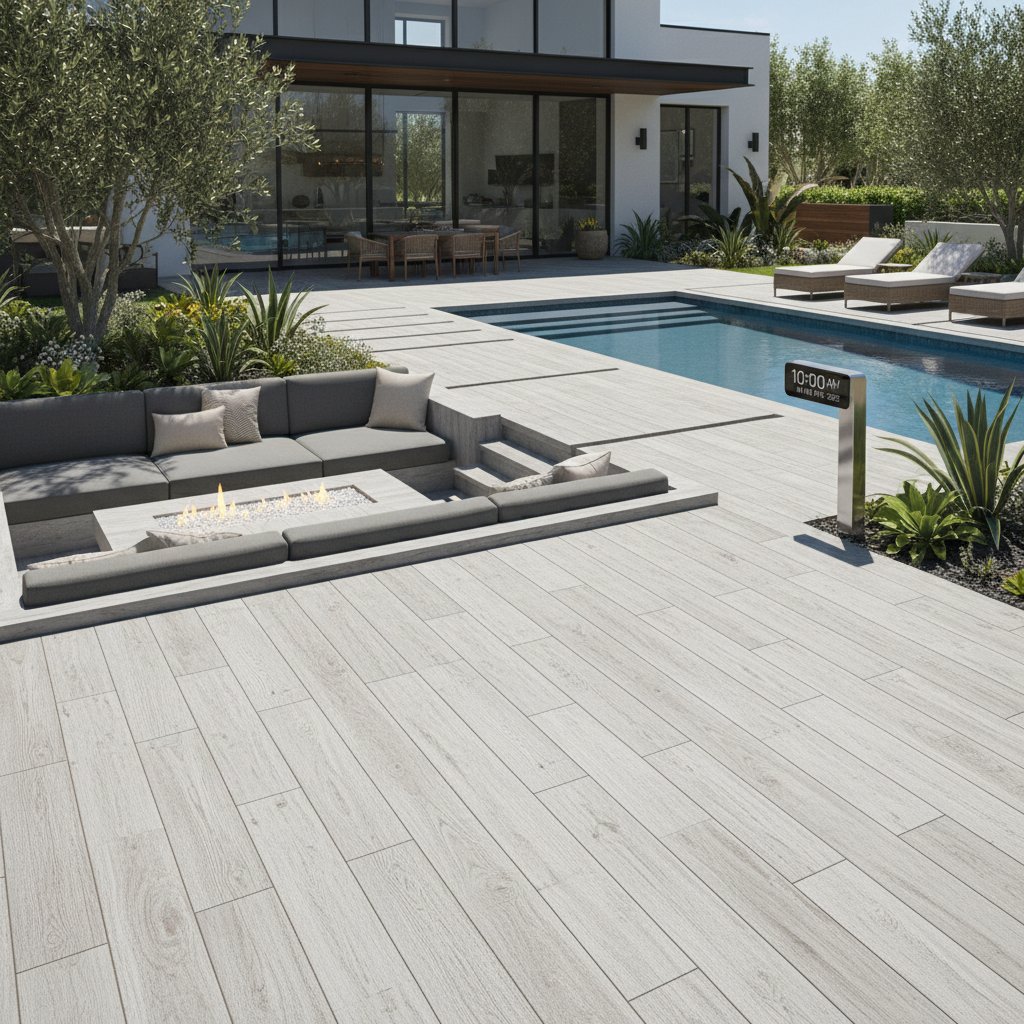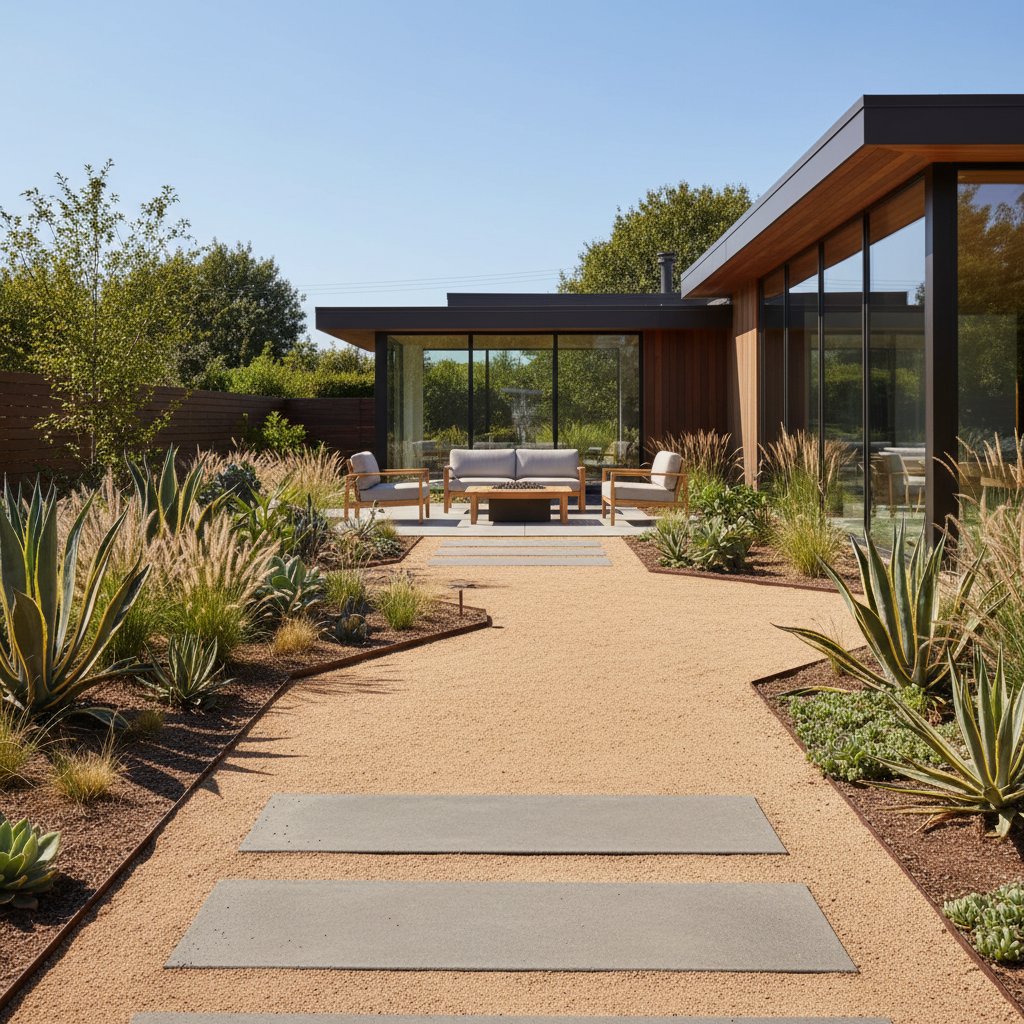Discover 2025 Eco Hardscape Trends with Recycled Stone
Many homeowners step into their yards and sense that the space no longer captures the original vision of a serene retreat. Worn patios, cracked pathways, and uninspired concrete borders often contribute to this feeling. Fortunately, emerging eco-friendly hardscape designs offer a straightforward way to revive beauty and functionality. Recycled stone stands at the core of this trend, infusing landscapes with historical depth and environmental responsibility.
Hardscaping forms the essential framework for outdoor areas, encompassing patios, walkways, retaining walls, and ornamental elements that provide structure. Current eco trends demonstrate that projects can deliver lasting strength while supporting planetary health. Recycled stone combines aesthetic appeal with practicality and significance. Each piece tells a story, allowing landscapes to bridge historical narratives with contemporary living.
Why Recycled Stone Appeals to Modern Homeowners
Homeowners increasingly select recycled stone for hardscape projects due to its blend of emotional resonance and functional benefits. This material diverts viable resources from landfills and lessens the need for fresh quarrying. Additionally, it imparts unique texture, color, and character absent in many new options.
A patio constructed from reclaimed granite or a pathway edged with aged limestone reveals immediate distinction. The stones possess a pre-existing patina from years of exposure, granting an established appearance from installation. This avoids the stark, artificial quality of freshly cut materials.
Recycled stone fosters a connection to enduring legacy. A particular slab might originate from a demolished structure or historic roadway. Incorporating such elements into a residential landscape revives their utility and grounds the design in genuine heritage.
Assessing Your Outdoor Space
Before exploring design concepts, conduct a thorough evaluation of the existing area. Traverse the yard methodically and envision the integration of recycled stone.
Consider these key questions:
- Do entertaining zones require reinforced surfaces, such as a patio or fire pit surround?
- Does soil erosion necessitate a retaining wall for stabilization?
- Could a stone pathway enhance garden accessibility?
- Might natural stone borders refine and soften existing edges?
Document elements that appear fatigued or underutilized, as these represent prime opportunities for renewal. The versatility of recycled stone allows modest changes to yield substantial improvements.
Planning with Purpose
After identifying priorities, proceed to deliberate planning. Sustainable design extends beyond material selection to encompass thoughtful arrangement.
Evaluate circulation patterns within the space. A recycled stone pathway should link features while encouraging leisurely exploration of the garden. Position patios to seamlessly extend indoor living areas, rather than serving as mere stone slabs. Ensure walls and borders balance utility with visual interest.
Employ sketches or basic landscaping software to prototype configurations. Given the irregular forms of recycled stone, favor layouts that incorporate fluid curves and organic contours for optimal results.
Incorporating Stone into Patios and Pathways
Patios rank among the primary applications for recycled stone. Substantial, level slabs like reclaimed granite or sandstone yield robust, enduring platforms with enduring elegance. In contrast to poured concrete, which prone to fracturing and fading, stone acquires enhanced patina through weathering.
For pathways, opt for compact, varied fragments embedded in gravel or sand bases to evoke a rustic, cottage ambiance suitable for diverse garden scales. For a more refined walkway, arrange recycled bricks or precisely cut stones in patterned sequences. The chosen material directly shapes the garden's overall atmosphere.
Practical consideration: Account for the variable dimensions and contours of recycled stone. Embrace adaptive arrangements where inconsistencies enhance the distinctive allure.
Constructing Retaining Walls with Character
Sloped or terraced yards benefit from retaining walls that provide both practicality and aesthetic enhancement. Recycled stone excels here, leveraging its mass and resilience to secure soil while introducing tactile depth.
Dry-stacked walls using salvaged limestone or fieldstone integrate seamlessly with the terrain, as if native to the site. The interstices between stones permit moss and low-growing flora to establish, gradually tempering the wall's rigidity. This approach yields a dynamic feature far superior to rigid concrete retainers.
Defining Borders and Accents
Major undertakings are not essential for impact; subtle applications often yield profound charm. Recycled stone serves effectively as edging for floral or vegetable beds. Irregular shards create casual delineations, while aligned segments offer a crisp finish.
Strategic accents amplify key elements. Position a reclaimed stone bench beneath foliage for repose, craft a birdbath from repurposed material, or form a stepping stone perimeter to frame a central planting. These details infuse the landscape with individualized personality.
The Importance of Sustainability in Hardscaping
Selecting recycled stone transcends mere aesthetics; it embodies environmental stewardship. Utilizing salvaged resources conserves the energy and raw inputs required for extracting, shipping, and refining virgin stone. Furthermore, it diminishes landfill contributions by repurposing discarded items.
This practice aligns with the expanding ethos of responsible habitation. Individuals recognize that leisure and social outdoor venues can embody personal principles. A recycled stone hardscape becomes a dialogue starter and an affirmation of ecological commitment.
Maintaining Recycled Stone Features
Post-installation, upkeep remains uncomplicated. Although stone endures rigorous conditions, periodic care preserves its optimal condition.
- Regularly sweep or hose down surfaces to eliminate accumulated debris.
- Clear moss or algae from walkways if slipperiness arises, though some prefer the organic patina.
- Replenish sand or gravel in joints to sustain structural integrity.
- Inspect walls periodically for displaced stones and reposition as necessary to prevent movement.
Such routines demand minimal effort yet prolong the feature's vitality and appeal across decades.
Adapting to Seasonal Changes
Recycled stone installations encounter fluctuations in climate, precipitation, and sunlight. Proactive seasonal measures ensure resilience.
During summer, wash patios and paths to mitigate dust and pollen residue. In winter, eschew abrasive de-icers that erode stone; substitute with sand or biodegradable options for grip. Promptly remove fallen leaves from surfaces to avert discoloration.
Observing Landscape Evolution
Over time, recycled stone harmonizes profoundly with its surroundings. Vegetation emerges in fissures, lichen adorns edges, and surfaces develop a layered luster that complements adjacent plantings.
A previously lackluster yard evolves into a cohesive sanctuary. This process transcends construction; it cultivates an environment for communal gatherings, enduring recollections, and maturing aesthetics.
Embracing Recycled Stone for Lasting Impact
When an outdoor area warrants refreshment, recycled stone provides a substantive and purposeful avenue. Initiate with modest endeavors like bed edging or isolated stepping stones, or pursue expansive elements such as patios or barriers.
Decisions made now shape the landscape's future trajectory. Integrating recycled stone not only rejuvenates the yard but also perpetuates a beneficial reuse paradigm. Each interaction with these features—traversing a pathway, lounging by a hearth, or resting on a bench—evokes historical substance and forward-looking vitality.



